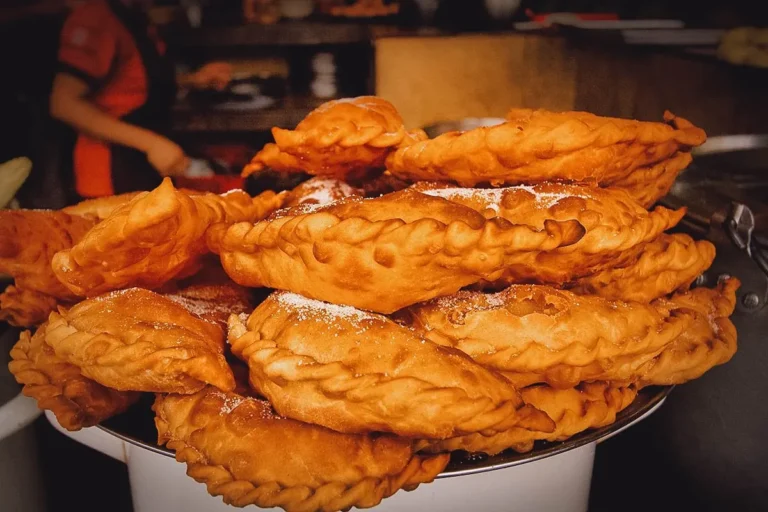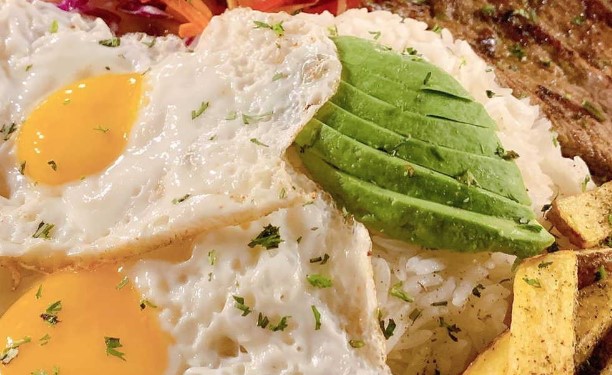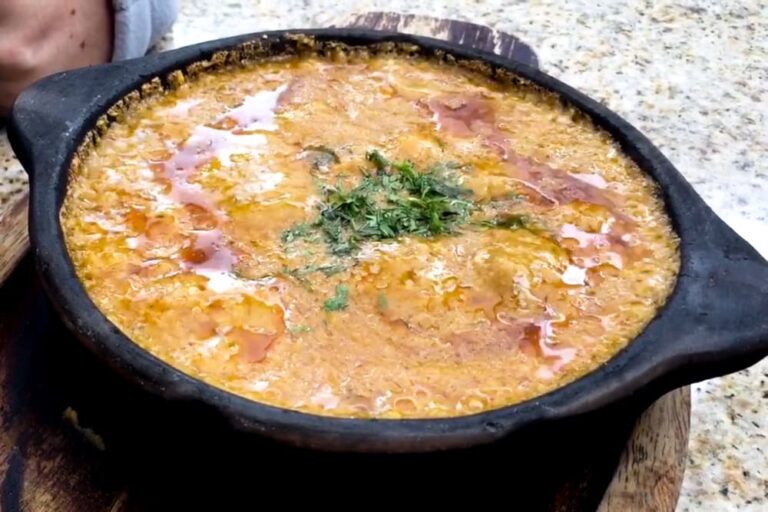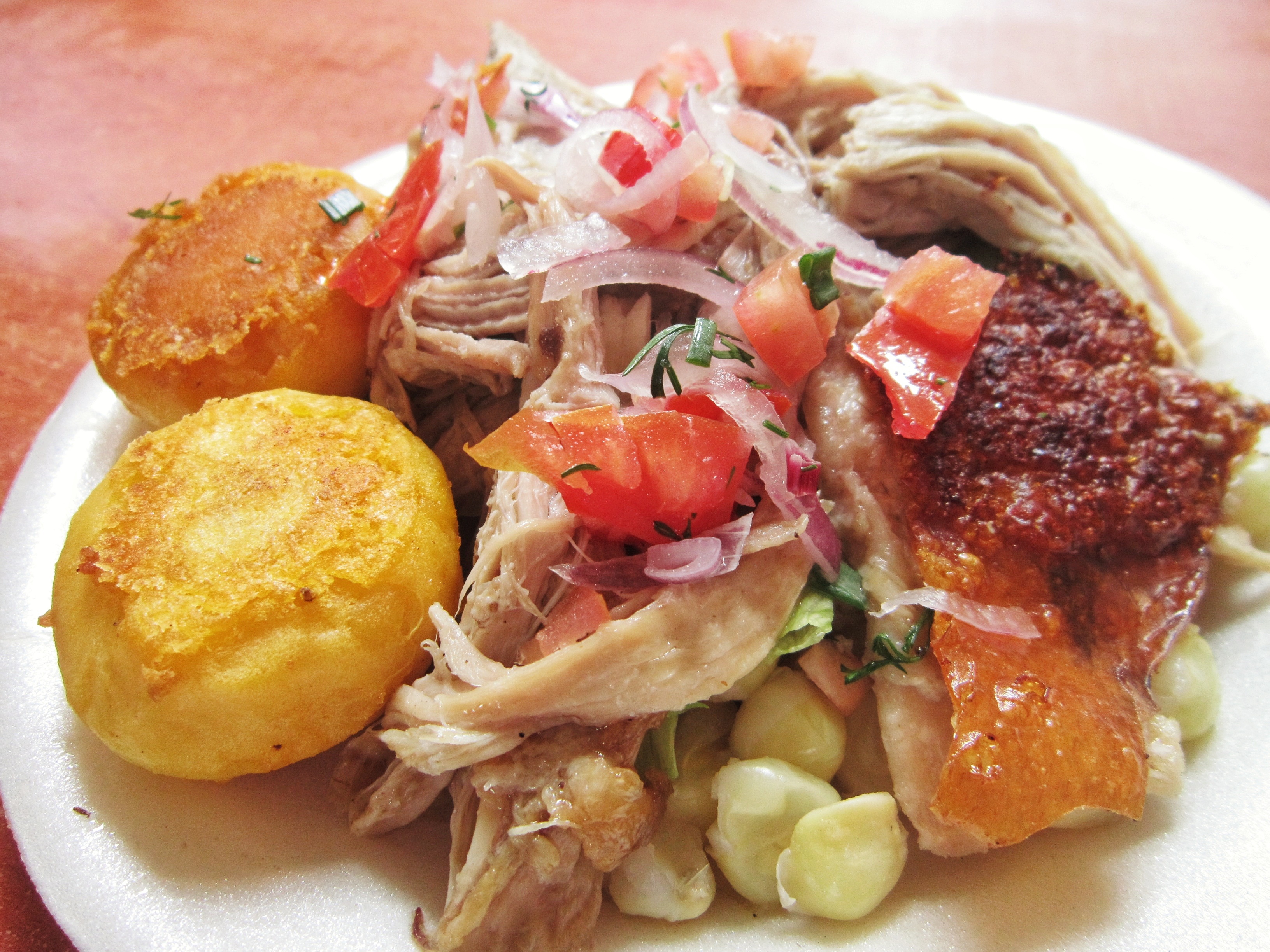Introduction: Ecuadorian cuisine
Ecuador has a rich culinary culture with diverse flavors and ingredients. The country’s cuisine varies from region to region, with influences from the Andean, Pacific coast, and Amazonian areas. Ecuadorian dishes are commonly made with fresh produce such as corn, potatoes, and seafood. In this article, we will explore some traditional Ecuadorian dishes that are a must-try for any food lover.
Ceviche: a seafood delicacy
Ceviche is a popular dish in Ecuadorian coastal regions. It is made with fresh raw seafood, such as shrimp, fish, or octopus, marinated in citrus juice, onion, tomatoes, and cilantro. The acidity of the citrus juice cooks the seafood, resulting in a refreshing and flavorful dish. Ecuadorian ceviche is served with popcorn, plantain chips, and sometimes roasted corn. It is a perfect appetizer or light meal on a hot summer day.
Locro: a hearty soup with corn
Locro is an Andean soup made with potatoes, corn, cheese, and meat. It is a hearty and comforting dish that is popular during the colder months. The soup’s base is made with a puree of potatoes and onions, seasoned with garlic, cumin, and achiote. To this, corn and cheese are added, along with meat such as pork, chicken, or beef. The soup is garnished with avocado, cilantro, and fried pork rinds. It is a satisfying and flavorful meal that is sure to warm you up.
Fanesca: a special Easter soup
Fanesca is a traditional soup served during Easter in Ecuador. It is a complex soup made with over a dozen ingredients, including grains, beans, and vegetables. The soup’s base is made with pumpkin, corn, and milk, seasoned with onion, garlic, and achiote. To this, grains such as quinoa, rice, and beans are added, along with salt cod, cheese, and peanuts. The soup is garnished with hard-boiled eggs, fried plantains, and empanadas. Fanesca is a special dish that is only available during Easter, so be sure to try it if you’re in Ecuador during the holiday.
Encebollado: a fish and onion soup
Encebollado is a fish and onion soup that is popular in Ecuadorian coastal regions. It is made with fresh tuna or albacore, boiled in a broth of onions, tomatoes, and spices. The soup is flavored with cilantro, cumin, and lime juice. Encebollado is served with popcorn, plantain chips, and sometimes pickled vegetables. It is a flavorful and satisfying dish that is perfect for seafood lovers.
Hornado: roasted pork with sides
Hornado is a dish made with roasted pork, served with sides such as potatoes, corn, and avocado. The pork is marinated in a mixture of spices, including cumin, garlic, and achiote. It is then roasted in a wood-fired oven, resulting in a crispy and flavorful skin. Hornado is served with mote, a type of hominy corn, potatoes, and avocado. It is a filling and delicious meal that is popular in Ecuadorian highlands.
Llapingachos: potato-stuffed pancakes
Llapingachos are potato-stuffed pancakes that are a popular side dish in Ecuador. The pancakes are made with mashed potatoes, onion, and cheese, formed into balls and flattened into pancakes. They are then fried until crispy on the outside and soft on the inside. Llapingachos are served with a peanut sauce, lettuce, and tomato. They are a perfect accompaniment to grilled meats or as a vegetarian main dish.
Churrasco: grilled beef with rice and beans
Churrasco is a grilled beef dish that is popular in Ecuador. It is made with thinly sliced beef, marinated in a mixture of spices, and grilled to perfection. It is served with rice, beans, and a fried egg on top. Churrasco is a filling and flavorful dish that is perfect for meat lovers.
In conclusion, Ecuadorian cuisine offers a diverse range of flavors and ingredients that are worth exploring. From ceviche to churrasco, each dish is unique and delicious. Be sure to try some of these traditional Ecuadorian dishes on your next trip to the country.










